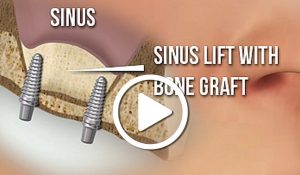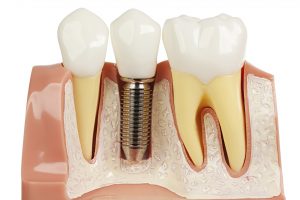Binge watching TV can kill you!
If you remember your mother or your grandmother telling you not to sit too close to the television screen because it would “melt out your eyeballs”, the odds are pretty good that you remember sloughing off their advice and ignoring the potential health risks that long-term exposure to television can pose. And while the your mom and grandmother probably were a little bit off-base with believing that your eyeballs would melt right out of your sockets because you’ve watched television to close, they weren’t wrong that the TV – and any screen, for that matter – can actually kill you.
More and more research from respected universities and groups all over the world points to a very high spike in mortality rates involving people that remain sedentary for longer blocks of time than they would have in the past. Binge watching your favorite show on Netflix, for example, may actually increase your risk of death by a factor of 15% Television is one of the world’s favorite distractions, with the overwhelming majority of people spending at least 21 hours a week – every single week – planted right in front of their television screen, laptop, or tablet watching movies and shows. Unfortunately, this grand distraction can lead to a tremendous amount of health concerns later down the line – and researchers are noticing and extreme spike in a handful of debilitating and deadly conditions that they believe are closely related to this more sedentary lifestyle.
Dangerous conditions are up significantly Diabetes is up 56% in individuals that watch at least two hours of television every day. Suicide is up 43% in individuals that watch at least two hours of television each day. Parkinson’s disease, liver disease, COPD, and heart disease are all up at least 30% in individuals that watch at least two hours of television per day. We are talking about a serious health epidemic here, and we need to do everything in our power to break the sedentary lifestyle that we’ve been leading and move our bodies more often. All you have to do is take a break between the binge watches to stretch, to move your body, to get the blood flowing to all of your extremities and you’ll be able to dramatically reduce the negative impact that sitting down and watching a show for hours and hours on end can have on your body.
Sinus Lift Surgery:
Planning Successful Implants
Sinus Lift Surgery (sometimes called Sinus augmentation) is sometimes necessary in order to fit dental implants. It is usually used when there in insufficient space between your sinuses and your upper jaw to be able to fit the implants into your mouth. This can happen for a variety of reasons including bone loss due to previously lost teeth or bone loss due to gum disease.
 This surgery is becoming increasingly common due to that fact that more people are having implants fitted. It is considered that this is in turn due to increased sugary and acidic foods in our everyday diets. However, there is little scientific evidence for this. It is mainly anecdotal. In addition, there may be a link between the increase in Sinus Augmentation and an aging population since sinus can increase in size as you get older.
This surgery is becoming increasingly common due to that fact that more people are having implants fitted. It is considered that this is in turn due to increased sugary and acidic foods in our everyday diets. However, there is little scientific evidence for this. It is mainly anecdotal. In addition, there may be a link between the increase in Sinus Augmentation and an aging population since sinus can increase in size as you get older.
Sinus Lift surgery is also considered to be very successful with around 90% people who undergo the surgery achieving the desired results. The only reluctance that some people have is the cost involved and although it is a commonplace procedure it must be said that this is a not a minor procedure like having a dental filling. This surgery must be performed by a specialist and it is unlikely that your regular dentist will do it unless they happen to be such a specialist.
In order to perform this surgery bone may be taken from another area of your body. This could be from inside your mouth or an area like the hip. If this proves difficult then sometimes cow bone is used in place of taking bone from another area of your body. Or else the surgeon will use some bone replacement product. This is becoming increasingly common. If he uses real bone, it will of course be ground down for use in the surgery. This part of the procedure is relatively pain free. Your surgeon will make the diagnosis in discussion with you.
During the actually Sinus Lift Surgery the inside of the mouth is cut in the appropriate place and filled with the ground bone before being stitched closed to secure it in place. Although this sounds very dramatic in real terms usually only a very small amount of bone is required to fill the space made.
Some time is given for your mouth to recover from the surgery before any dental implants are attempted. This can be any time scale but between four and nine months is usual. It depends on many factors including your own personal recovery rate. Only when your surgeon or dentist is happy that you have fully recovered from the procedure will implants procedures be considered.
There are a number of painful after effects from Sinus augmentation surgery, not helped by the fact that the mouth is a very sensitive area of the body. But with the right painkillers the entire process can be pain free. Most likely, your dentist will put you on prescription painkillers and even antibiotics to cut infection risk. There is also likely to be some swelling in the mouth that is visible on your face, but there should not be excessive bleeding.
Pain control is important in the early recovery stages too, and your surgeon will most likely provide you with a prescription to buy codeine or some other strong painkiller online as well as prescription-strength Ibuprofen to reduce the swelling and inflammation. Co-codamol is a standby for surgeons in the UK as it contains both codeine and paracetamol. You need to make sure you follow through with your surgeon’s instructions on pain relief as well as antibiotics to ensure that you do not get any infection. This way your recovery can be as pleasant and pain free as possible.
After around seven to fourteen days after surgery stitches may be removed if they have not dissolved of their own accord, and the stage will be set for you new implants.
Blood tests:
The secret to peak fitness
Up until just a few short years ago professional athletes had a lot of extra advantages that amateurs never had access to when it came to getting fit and creating customized plans to reach their genetic potential, but that just isn’t the truth any longer. Thanks in large part to major advances in technology that have made these tools and solutions infinitely accessible while at the same time a lot cheaper than they ever were in the past, everyone – and we mean EVERYONE – now has the opportunity to better understand where they are fitness wise and what they need to do to reach their health and wellness goals. And though there are certainly a lot of different solutions you’ll have the opportunity to take advantage of when it comes time to better understand where you are fitness wise, nothing beats a simple and straightforward fitness blood test for giving you answers you never would have had access to otherwise.

By utilizing fitness focused blood testing you’ll be able to better understand the hormonal impact that your exercise programs have on the body, the kind of impact that the food you are eating has on your ability to gain muscle and burn fat, and you’ll also be able to spot inefficiencies and potential risk factors a lot earlier than you would have been able to otherwise. Blood tests aren’t just in the realm of medical doctors any longer Though you can certainly have a traditional blood test done at any major medical facility around the world to get access to some basic answers, the truth of the matter is you want to seek out professional fitness focused companies that will analyze your blood and provide you with answers in context so that you can immediately apply this new information. There are a number of different services all over the world that offer these kinds of results, and you’ll be wise to take advantage of the ones that have a top-tier reputation. World-class football clubs and elite athletes all over the world have been using some of these organizations for years and years now, but increased competition and access to testing tools and protocols have opened up the field too much less expensive services. With just a little bit of research you should be able to find the right company for your needs to help you get all of the results you are after.
Pain & Dental Implants
 Dental implants have the ability to completely revolutionize your smile faster than any other modern dental procedure, all while giving you a completely natural look that is impossible to pull off any other way.
Dental implants have the ability to completely revolutionize your smile faster than any other modern dental procedure, all while giving you a completely natural look that is impossible to pull off any other way.
At the same time, getting dental implants will involve minor dental surgery – and you’ll need to make sure that you’re ready to deal with pain management immediately after surgery and for a few days afterwards. To better help you with pain control, we’ve put together these quick tips and tricks that you’ll want to make the most of!
The first 60 minutes are critical
The first 60 minutes after your dental implant surgery are going to be relatively painless as you’ll still be feeling the effects of anesthesia, local numbing agents, and other pain medications given to you during or before the surgery – but the 60 minutes are going to set up just how much pain you’re going to be dealing with for the next few days, which is exactly why you need to be focused on making the most of them.
Bite down gently, but firmly, on the gauze packs that have been provided and then make sure that you swap these gauze packs out every 30 minutes or so for the first 60 minutes. After that, you want to replace gauze packs every hour for the first day, keeping constant pressure on the area to minimize pain moving forward.
Leave the surgical area alone for at least 24 hours
Secondly, you’re going to want to make sure that you leave your surgical area alone for the first 24 hours. Do not scrub your dental implant, don’t play with your dental implant, and when you brush your teeth make sure that you do so as gently as humanly possible while avoiding the dental implant area itself.
Fall in love with regular rinses multiple times a day
It’s important for you to keep your mouth as clean as you can, which is where saltwater rinses are going to come into play. Mix a single tablespoon of salt in 8 ounces of warm water and swish around gently throughout the surgical area and the rest of your mouth. Do this two or three times a day – especially after you finish eating – and you will be able to keep your mouth clean and the surgical area free of stress.
Keep your workout routine to a minimum
While it may not seem like it has much of a connection at all, you working out the rest of your body can have a tremendous negative impact on your dental implant and your surgery just from the increasing blood flow all over your body. Try to stick to as sedentary a lifestyle as possible for 24 hours to 48 hours after you have surgery and your pain relief needs will go down dramatically.
This is one of the most important pain management tips and tricks we can’t share with you, and something that you’ll definitely want to take advantage of. This is especially true if you’re using painkillers like codeine which can cause a little bit of trouble if you get your blood really pumping.